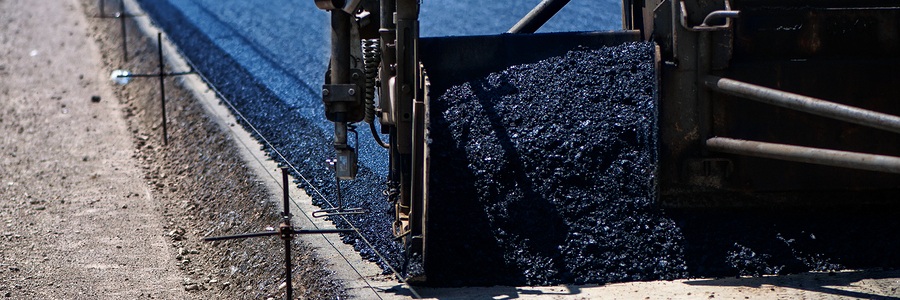5 Simple Techniques For A1 Professional Asphalt & Sealing Llc
5 Simple Techniques For A1 Professional Asphalt & Sealing Llc
Blog Article
The A1 Professional Asphalt & Sealing Llc Statements
Table of ContentsA1 Professional Asphalt & Sealing Llc Things To Know Before You Get ThisAll About A1 Professional Asphalt & Sealing LlcA1 Professional Asphalt & Sealing Llc Can Be Fun For EveryoneThe A1 Professional Asphalt & Sealing Llc IdeasThe smart Trick of A1 Professional Asphalt & Sealing Llc That Nobody is Talking About

The oil in a cars and truck engine is not simply oil. The REOB has all the additives that were in the waste oil as well as the wear metals from the engine (primarily iron and copper).
However, by making many blends making use of different REOB examples and different asphalt binders, the variants largely can be balanced out. Numerous States gave samples of recognized REOB make-up to TFHRC scientists, that evaluated the examples to compare the percent of added (recognized) REOB to the found (examined) amount. The evaluations revealed an equivalent percent of included and found REOB.
How A1 Professional Asphalt & Sealing Llc can Save You Time, Stress, and Money.
They obtained a frustrating feedback. The TFHRC scientists examined 1,532 examples from 40 States, one Canadian province, and two Federal Lands Freeway departments. They examined each example twiceamounting to even more than 3,000 evaluations. None of those States realized that the asphalt they were buying consisted of REOB. One State urged its samples had no REOB.
Of the 1,532 samples evaluated, 12 percent had REOB, and some consisted of substantially high levels of it at 1020 percent. The highest degree was 34 percent in a sample from Texas, which TxDOT had made use of in a patching compound. This testing additionally revealed the presence of phosphoric acid in 11 percent of the examples, and 2 percent contained ground tire rubber.
2 years earlier at TRB's annual conference, the Federal scientists held an REOB workshop and presented the searchings for of their lab examinations to a standing room-only group. Although some companies do not especially ban REOB, they do enforce physical tests that avert its useeffectively a ban. asphalt sealcoating in st louis. Others do not ban it by spec, yet have arrangements with asphalt vendors to prevent making use of REOB
The Single Strategy To Use For A1 Professional Asphalt & Sealing Llc
A handful do allow REOB, some within particular limitations. Ohio and Texas limit levels to much less than 5 percent of the asphalt. To establish a dependable test technique that all States can utilize, the TFHRC researchers set up a round-robin examination strategy. The participants are 11 State highway firms (Illinois, Massachusetts, Minnesota, Mississippi, Montana, North Carolina, Oklahoma, South Carolina, Texas, Vermont, and Wyoming), 2 independent screening labs, the Ministry of Transport in Ontario, Queen's College in Ontario, and an Ontario paving professional.
In total amount, the researchers prepared and shipped 720 blends. The individuals are evaluating the examples separately utilizing the guidelines given by the TFHRC scientists. The round-robin testing is virtually completed, and TFHRC is in the procedure of collecting the outcomes. The outcome will certainly be a recommended AASHTO test approach that any State can adopt and utilize (a1 asphalt).
The sidewalk with REOB, which is located 0.6 mile (1 kilometer) from the sidewalk without REOB, has the same subgrade, web traffic useful reference thickness, and climate. Nevertheless, the segment of Highway655 with 5 to 10 percent REOB showed considerable splitting. In this instance, the visibility of REOB was the identified source of splitting at a reduced temperature levels.
An area of examination pavement in Minnesota (MN1-4) located to have REOB also cracked too soon. The pavement carried out well for the first 3 to 4 years, however then started to crack.
The Best Strategy To Use For A1 Professional Asphalt & Sealing Llc
The tests were not comprehensive, but they revealed that at degrees of 6 percent or even more, the tensile strength of the asphalt dropped dramatically. At a level of 3.5 percent REOB, the variant in the physical examination methods was higher than the impact of REOB. It was challenging for scientists to assess whether REOB was present. https://www.kickstarter.com/profile/a1asphaltseal/about.

One binder criterion considered is the difference between the low temperature important spec temperature for stiffness (S) in the bending beam of light rheometer and the bending beam of light rheometer creep incline (m-value) noted as Tcritical. TC = TC (S) TC (m-value). Assessment of this parameter is still continuous. Two independent study groups, one from AASHTO and the various other from the Asphalt Institute, ended that even more study is required on using REOB in asphalt.
Previously, all asphalt testing determined design residential or commercial properties such as stiffness. These tests do disappoint what products had been included in the asphalt. One sample obtained throughout the TFHRC study had an extremely weird analysis. The example had the following test results: Superpave PG 64-28 with a high temperature level grade of 67.3 Tcritical on the flexing beam of light rheometer was 6.7 degrees Celsius.

8 Simple Techniques For A1 Professional Asphalt & Sealing Llc
These outcomes show there are weaknesses in the standardized engineering testing protocols that might be exploited. The producer may have a financial benefit and the item passes all the standard examinations, but the product may not be advantageous to making sure lasting efficiency. To resolve this concern and the expansion of new asphalt additives and extenders, TFHRC is beginning a research program to make use of portable spectroscopic devices, x-ray fluorescence spectroscopy, and Fourier change infrared spectroscopy to allow evaluations to be carried out in the area as opposed to having to take examples back to the lab.
Report this page